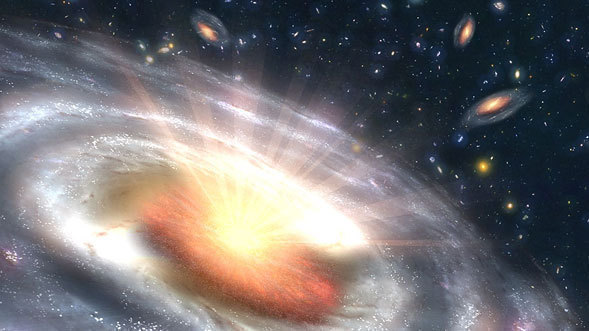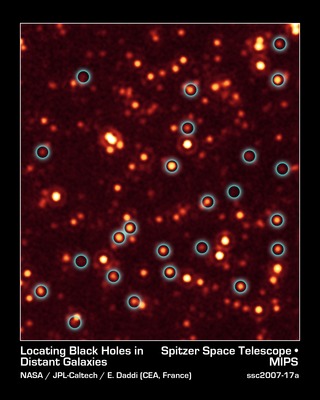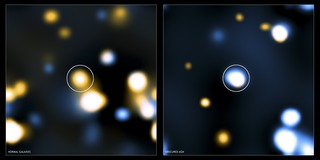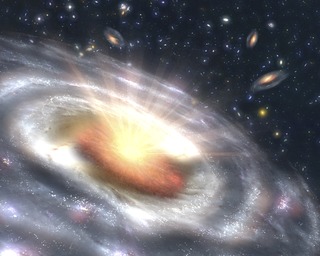
Credit: NASA/CXC/Durham/D.Alexander et al.
Observation • October 25th, 2007 • ssc2007-17b
ssc2007-17b
These two images show "stacked" Chandra images for two different classes of distant, massive galaxy detected with Spitzer. Image stacking is a procedure used to detect emission from objects that is too faint to be detected in single images. To enhance the signal, images of these faint objects are stacked on top of one another.
In both images, low-energy X-rays are shown in orange and high-energy X-rays in blue, and the stacked object is in the center of the image (the other sources beyond the center of the image are X-ray sources that were directly detected and are not part of the source stacking).
On the left is a stacked Chandra image of the "normal" galaxies seen with Spitzer. The infrared emission for these young, massive galaxies is consistent with expectations for star formation. The Chandra image shows mainly low-energy X-ray emission at the center as expected.
On the right, is a stacked Chandra image for galaxies with infrared emission exceeding the levels likely to be caused by star formation. These galaxies contain active galactic nuclei, or quasars, in their centers. These are luminous objects powered by the rapid growth of supermassive black holes. The obscured quasars show much higher levels of high-energy X-ray emission because the less energetic X-rays are mostly absorbed by gas.
About the Object
- Name
- GOODS South
- Type
- Cosmology > Morphology > Deep Field
Color Mapping
| Band | Wavelength | Telescope |
| X-ray | Chandra ACIS | |
| X-ray | Chandra ACIS |







